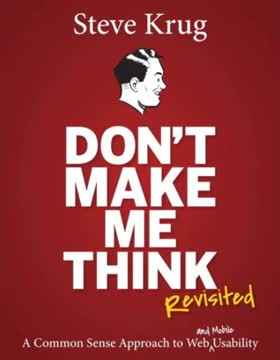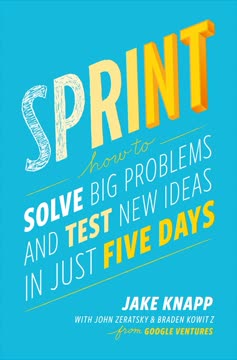Key Takeaways
1. Web Analytics 2.0: A holistic approach to online data analysis
Web Analytics 2.0 is: the analysis of qualitative and quantitative data from your website and the competition, to drive a continual improvement of the online experience that your customers, and potential customers have, which translates into your desired outcomes (online and offline).
Expanded definition. Web Analytics 2.0 goes beyond traditional clickstream data to include:
- Clickstream analysis (what happened)
- Multiple outcomes analysis (how much)
- Experimentation and testing (why)
- Voice of Customer (why)
- Competitive intelligence (what else)
This approach provides a more comprehensive understanding of online performance and customer behavior. It combines quantitative data with qualitative insights, allowing businesses to make data-driven decisions that improve both user experience and business outcomes.
2. The critical few: Focus on key metrics that truly matter
Focus on the "critical few," not the "insignificant many."
Identify core metrics. To avoid drowning in data, businesses should:
- Define 3-4 key performance indicators (KPIs) that align with strategic objectives
- Ensure these KPIs are easily understood across the organization
- Regularly review and update these metrics to maintain relevance
Examples of critical few metrics:
- Conversion rate
- Customer acquisition cost
- Lifetime customer value
- Net Promoter Score
By focusing on a select few metrics, organizations can more effectively drive action and improve performance.
3. Segmentation: The key to unlocking actionable insights
If you are the only person who understands the metric or the key performance indicator, then you have just guaranteed that your company will not take action.
Dive deeper into data. Segmentation allows analysts to:
- Identify patterns and trends within specific user groups
- Uncover insights that may be hidden in aggregate data
- Tailor strategies for different audience segments
Common segmentation dimensions:
- Demographics (age, gender, location)
- Traffic sources (organic search, paid search, social media)
- User behavior (new vs. returning visitors, high-value customers)
- Technology (device type, browser)
By segmenting data, analysts can provide more targeted and actionable recommendations to improve website performance and user experience.
4. Beyond conversion rates: Measuring micro and macro conversions
You want to know how to go about this? Sure. Focus on measuring your Macro (overall) Conversions, but for optimal awesomeness, identify and measure your Micro Conversions as well.
Holistic conversion tracking. Businesses should:
- Define macro conversions (primary goals, e.g., purchases)
- Identify micro conversions (smaller actions that lead to macro conversions)
- Measure and optimize both types of conversions
Examples of micro conversions:
- Newsletter sign-ups
- Video views
- Product page views
- Adding items to cart
By tracking micro conversions, businesses can better understand the customer journey and optimize the path to macro conversions, ultimately improving overall website performance.
5. Testing and experimentation: Fail faster to succeed sooner
Experiment or die.
Embrace a culture of testing. To improve website performance:
- Implement A/B and multivariate testing
- Start with simple tests and gradually increase complexity
- Use controlled experiments to answer fundamental business questions
Benefits of testing and experimentation:
- Data-driven decision making
- Continuous improvement of user experience
- Increased conversions and revenue
By systematically testing hypotheses and measuring results, businesses can make informed decisions and quickly iterate on their online strategies.
6. Voice of Customer: Qualitative data complements quantitative metrics
The single biggest surveying mistake: We constantly fail to balance what is knowable vs. what is actionable.
Integrate qualitative insights. To understand the "why" behind the numbers:
- Implement on-site surveys and feedback mechanisms
- Conduct usability studies (in-person or remote)
- Analyze customer support interactions and social media sentiment
Key qualitative data collection methods:
- Exit surveys
- Live chat transcripts
- User testing sessions
- Customer interviews
By combining quantitative metrics with qualitative insights, businesses can gain a more comprehensive understanding of user behavior and preferences, leading to more effective optimization strategies.
7. Search analytics: Optimizing for the long tail
The visits on your brand terms tend to be from people who already know you and people who are a lot later in their purchase life cycle.
Leverage long-tail keywords. To maximize search performance:
- Analyze the distribution of head and long-tail keywords
- Optimize SEO efforts for brand terms and high-volume keywords
- Focus PPC campaigns on long-tail, category-specific keywords
Benefits of a long-tail strategy:
- Lower competition and cost-per-click
- Higher conversion rates for specific queries
- Improved overall search visibility
By understanding and optimizing for both head and long-tail keywords, businesses can create a more balanced and effective search marketing strategy.
8. Mobile and video analytics: Measuring emerging platforms
The Web has seen an incredible evolution in the past few years: a shift from one-way conversation to two-way conversation; the richness of the web experience powered by video, Ajax, and Flash; and content distribution through multiple channels such as RSS and mobile.
Adapt to new platforms. To effectively measure emerging channels:
- Implement mobile-specific analytics tools and metrics
- Track video engagement beyond simple view counts
- Consider cross-device user behavior and attribution
Key metrics for mobile and video:
- Mobile: App downloads, in-app purchases, mobile conversion rate
- Video: Play rate, watch time, drop-off points, social shares
By developing strategies to measure and optimize performance on emerging platforms, businesses can stay ahead of the curve and capture new opportunities for growth.
9. Actionable dashboards: Driving decisions, not just reporting numbers
If you want executives to use our dashboards and take action, then we must give them information and not data.
Create impactful reports. To drive action from analytics:
- Focus on key metrics and trends
- Provide context and benchmarks
- Include clear recommendations and next steps
Elements of an effective dashboard:
- Visualizations that highlight important trends
- Comparison to goals and previous periods
- Annotations explaining significant changes or events
- Clear calls-to-action based on the data
By designing dashboards that go beyond raw data to provide actionable insights, analysts can more effectively influence decision-making and drive business performance.
10. Overcoming data quality challenges: Precision over accuracy
On the Web, revolutions almost always fail. Evolution works.
Embrace incremental improvement. To handle data quality issues:
- Focus on precision (consistent measurement) over accuracy (perfect data)
- Implement a phased approach to analytics maturity
- Continuously audit and improve data collection processes
Steps to improve data quality:
- Tag essential pages and events
- Configure basic tool settings
- Implement campaign tracking
- Add advanced tracking (e.g., ecommerce)
- Integrate data from multiple sources
By taking a pragmatic approach to data quality and analytics implementation, businesses can start gaining valuable insights quickly while gradually improving the depth and breadth of their data collection and analysis capabilities.
Last updated:
FAQ
What's Web Analytics 2.0 about?
- Data-Driven Decisions: The book emphasizes the importance of using data to make informed decisions in online marketing and web analytics, shifting from faith-based to data-driven decision-making.
- Expanded Framework: Avinash Kaushik introduces Web Analytics 2.0, which includes qualitative data, competitive intelligence, and customer-centric strategies.
- Practical Solutions: It provides actionable insights and strategies for analyzing web data, measuring success, and improving online performance.
Why should I read Web Analytics 2.0?
- Expert Insights: Avinash Kaushik is a recognized thought leader in web analytics, offering valuable guidance for marketers and analysts.
- Comprehensive Framework: The book offers a framework to understand web analytics complexities and leverage data effectively.
- Charitable Contribution: Purchasing the book supports charitable causes, with proceeds donated to organizations like The Smile Train and Ekal Vidyalaya.
What are the key takeaways of Web Analytics 2.0?
- Data-Driven Culture: The book stresses cultivating a data-driven culture where decisions are based on web analytics insights.
- Outcome Focus: Emphasizes measuring outcomes rather than just metrics like visits or page views to understand the true impact of online efforts.
- Multiplicity Strategy: Advocates using various data sources and tools for a holistic view of web performance.
How does Avinash Kaushik define web analytics in Web Analytics 2.0?
- Comprehensive Definition: Web analytics is defined as analyzing qualitative and quantitative data from your website and competition to improve the online experience and achieve desired outcomes.
- Beyond Clickstream Data: It includes understanding customer behavior, competitive intelligence, and qualitative insights.
- Customer Experience Focus: The goal is to enhance the online experience for customers, leading to better business outcomes.
What is the 10/90 Rule in Web Analytics 2.0?
- Resource Investment: For every $10 spent on analytics tools, $90 should be invested in hiring skilled analysts, highlighting the importance of human resources.
- Complexity of Analytics: Tools collect data, but insights require analysts to interpret the data effectively.
- Focus on Talent: Prioritizes hiring and training talented analysts to maximize analytics investments.
What is the difference between Macro and Micro Conversions in Web Analytics 2.0?
- Macro Conversions: These are primary goals like purchases or newsletter sign-ups, directly contributing to business objectives.
- Micro Conversions: Smaller actions like resource downloads or product page views, indicating user engagement and leading to macro conversions.
- Importance of Both: Tracking both provides a fuller picture of user behavior and helps optimize website performance.
How does Web Analytics 2.0 suggest creating a data-driven culture?
- Transforming Company Culture: Emphasizes exciting people about analytics and making data accessible to all organizational levels.
- Actionable Reports: Advises creating reports that drive action and align with business objectives, ensuring data relevance.
- Empowering Employees: Fostering a culture valuing data-driven decision-making empowers employees to use analytics in daily work.
What is the Brand Evangelists Index (BEI) in Web Analytics 2.0?
- New Metric Definition: BEI measures customer satisfaction and loyalty by focusing on very satisfied customers while penalizing negative ratings.
- Formula for Success: Defined as: “{ [ (Very Satisfied + Extremely Satisfied) – (Not Satisfied + Not At All Satisfied) ] ÷ Number of Responses } × 100.”
- Cultural Impact: Shifts focus from meeting expectations to striving for excellence, fostering a customer-centric culture.
What are some critical web metrics discussed in Web Analytics 2.0?
- Bounce Rate: Measures the percentage of visitors leaving after viewing one page, indicating landing page engagement.
- Conversion Rate: Percentage of visitors completing a desired action, key for assessing website effectiveness.
- Engagement Metrics: Includes time on site and pages per visit, assessing how effectively a website captures visitor interest.
How does Web Analytics 2.0 address the challenges of multitouch attribution?
- Understanding Multitouch Attribution: Recognizes various touchpoints a customer interacts with before converting, complicating attribution.
- Different Models: Discusses models like last-click and first-click credit, emphasizing a custom approach aligning with business goals.
- Practical Recommendations: Encourages focusing on actionable insights rather than complex models for effective multitouch attribution.
What role does competitive intelligence play in Web Analytics 2.0?
- Contextual Insights: Provides context for understanding a company's performance relative to competitors, crucial for strategic decisions.
- Benchmarking Performance: Encourages using competitive intelligence tools to benchmark key metrics, identifying improvement areas.
- Driving Action: Leveraging competitive insights helps present compelling cases to management, driving action and investment.
What are some advanced analytical techniques mentioned in Web Analytics 2.0?
- Segmentation: Stresses segmenting data to uncover deeper insights and understand different visitor behaviors.
- A/B Testing: Discusses experimentation and testing to optimize website performance and improve user experience.
- Multichannel Attribution: Introduces multitouch campaign attribution analysis to understand marketing channels' impact on conversions.
Review Summary
Web Analytics 2.0 is highly praised for its comprehensive coverage of web analytics, offering valuable insights for both beginners and experts. Readers appreciate Kaushik's focus on actionable insights, clear explanations, and practical examples. The book is considered a must-read for digital marketers, providing strategies for promoting analytics in various organizations. While some find certain sections outdated or too technical, many readers highlight the book's enduring relevance and its ability to change perspectives on data analysis. Critics note its occasional repetitiveness and self-promotion, but overall, it remains a highly recommended resource for understanding web analytics.
Similar Books










Download PDF
Download EPUB
.epub digital book format is ideal for reading ebooks on phones, tablets, and e-readers.




